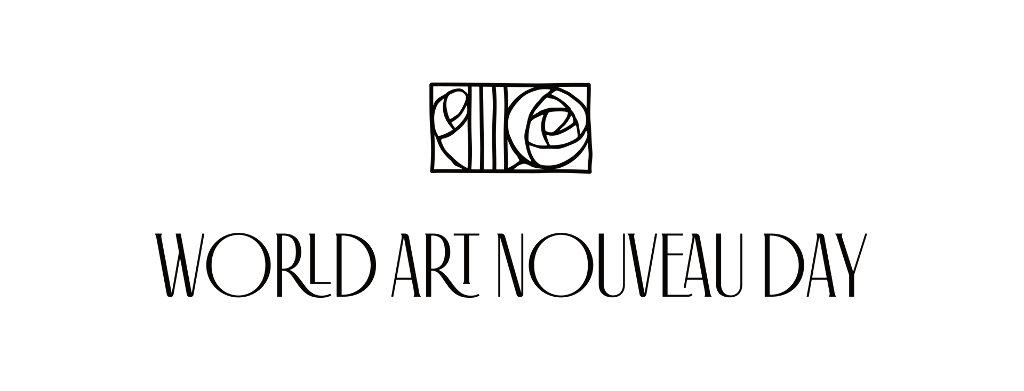Art Nouveau Bestiary of the Museum of Applied Arts
“Behold this vile, infesting mob
Thousand-legged, hundred-eyed:
Animalcules, insects, mites,
And microbes more marvelous
Than the seven wonders of the world
And Rosemunda’s palace!”
(Guillaume Apollinaire: The Bestiary, or Procession of Orpheus – excerpt)[i]
On World Art Nouveau Day every year on the 10th of June, we remember the anniversary of the deaths of the architects Antoni Gaudí and Ödön Lechner. This celebration, a Hungarian initiative, has been held on an international level since 2013.
The Réseau Art Nouveau Network (RANN) has designated a new central topic for the World Art Nouveau Day every year since 2017, and this year’s topic is the depiction of animals in Art Nouveau. The Museum of Applied Arts has combined the genre of medieval bestiaries,[ii] which had origins dating back to antiquity, with the museum’s rich collection of Art Nouveau works. We have collected fantastic beings, half-animal, half-human hybrids, and creatures from ancient mythology that represent the inexhaustible and unmatched artistic endeavors of Art Nouveau, which are sometimes strikingly charming and sometimes menacingly appalling.
Works of Art Nouveau drew inspiration from innumerable sources, antitypes, and impulses, and certain themes and motifs appeared with particular frequency. This includes the portrayal of animals, such as the peacock, the butterfly, the dragonfly, the bat, or the snake, whether in a naturalistic or abstract manner, often combined with the figure of the femme fatale. Fabulous and bizarre creatures that had sprung from the imagination were also amongst the favorite topics of Art Nouveau.
The earliest objects from our selection made up of one-hundred and twenty items are from around 1873, so were made under the aegis of Historicism and Eclecticism. However, the stylistic features of Art Nouveau can already be detected in certain details. The most recently dated objects are from between 1925 and 1930, so are the creations of Art Deco, the new trend that followed Art Nouveau.
The Art Nouveau bestiary is divided into four major thematic units, alluding to the arrangement of medieval examples, and presents the fantastic creatures according to their habitats:
I. Creatures of the water: attendants of Neptune, sea horses, mermaids
II.1. Creatures of the sky: dragons, griffons, phoenixes, harpies, sirens
II.2. Creatures of the sky: butterflies, dragonflies, fairies, cherubs, putti
III. Hybrid creatures of the ground: fauns, satyrs, centaurs, monsters
IV. Béla Krieger’s world of fantasy: “chimeras and beasts”[iii]
Dragons appear in the largest numbers in the collection of mythical beings. The figure of the dragon, which combines the four ancient elements, is an outstanding example of the differing meanings and beliefs related to legendary creatures depending on culture and geography. The dragon appears as an evil monster to be vanquished in European cultures, such as in the Nibelungenlied in the legend of Siegfried or the story of St. George and the Dragon. In contrast with this, the dragon is the lord of the sky in East Asian cultures, a symbol of abundance and prosperity, and appears as an exotic element in this manner on the ornamental ceramics of the Zsolnay factory of Pécs. Decorative themes using the Zsolnay factory’s iridescent eosin technique appeared in the Historicist period, but flourished in Art Nouveau. This included ornaments made for the millennial celebration of the Hungarian conquest, which combined Sassanid Persian and Saracen elements showing the eastern origins of the Hungarian people along with dragons, griffons, roebucks, and qilin.[iv]
The drawings of Béla Krieger, who settled in France and worked as a graphic artist and illustrator there, depict hybrid creatures and bear witness to his extraordinary, grotesque, and surreal imagination. The designs displayed here that he dreamt up for jewelry, hairpins, umbrella handles, and knife grips are also the winged and clawed heralds for a future exhibition.
[i] Guillaume Apollinaire, The Bestiary, or Procession of Orpheus, trans. X. J. Kennedy, (Baltimore [Maryland, USA]: Johns Hopkins University Press, 2011), https://muse.jhu.edu/chapter/361110 (accessed: 2 May 2021).
[ii] A bestiarium (Latin, meaning: bestiary) is a symbolic natural history book based on the ancient Physiologus, and a typical genre in medieval literature. They contain actual animals, mythical imaginary creatures, and types of rock, including their allegorical meanings and moral philosophical descriptions related to Christ, humans and the devil, usually accompanied by illustrations.
[iii] For more on Béla Krieger’s design drawings, see: Mária István, "‘Kimérák és állatok’: Krieger Béla (1861-?) és a szecessziós ékszerek világa” [‘Chimeras and Beasts’: Béla Krieger (1861-?) and the World of Art Nouveau Jewelry] Magyar Iparművészet, 2016/9, 7-13, https://www.epa.hu/01000/01059/00245/pdf/EPA01059_magyar_iparmuveszet_2016_09_007-013.pdf (accessed: 2 May 2021).
[iv] A Qilin is a mythical Chinese animal sometimes equated with a unicorn. The qi indicates the male and the lin the female. Its depiction is a zoological amalgamation, its head is a dragon, its deer-like body is covered in fish scales, and its tail is that of a cow. It is also depicted with two or three horns. It does not step upon any living creature, so it is revered as an animal that brings good fortune, prosperity, and peace. It is also considered a portent for childbirth.
by Piroska Novák, Sarolta Sztankovics




















